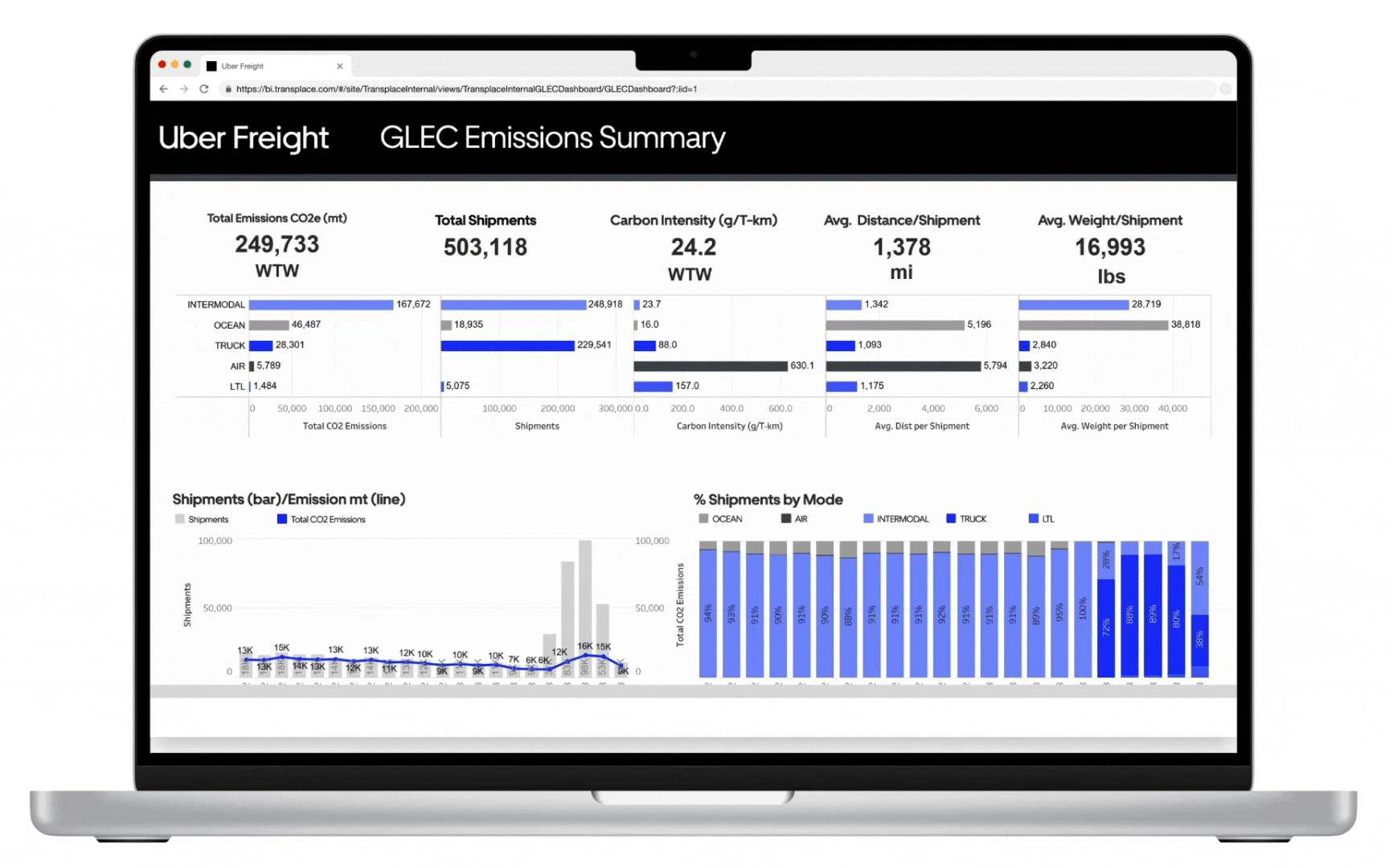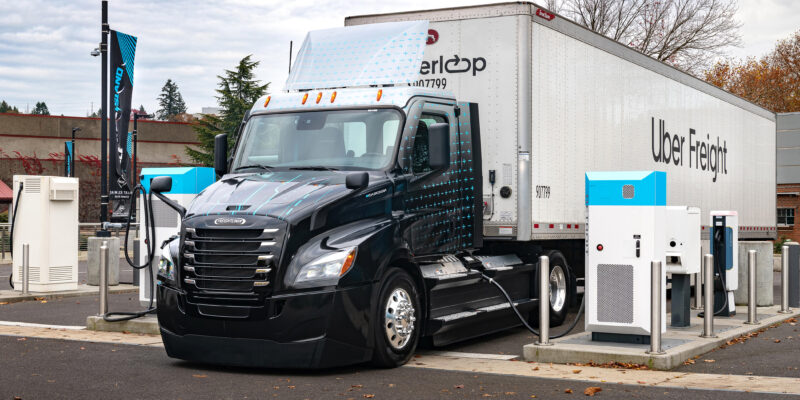Uber Freight Emissions Dashboard: Introducing greater emissions visibility to power sustainable logistics decisions

Uber Freight has the privilege to work with numerous sustainability-conscious enterprises. Many have outlined specific commitments and rely on our expansive suite of tools, capacity solutions, and consultation to optimize their networks and make progress on their climate goals.
Addressing emissions is an essential part of advancing those efforts. Yet, it’s notoriously difficult to track emissions, particularly for sophisticated supply chain operations that span various modes of transportation. For companies eager to make a meaningful impact to their carbon footprint, it’s impossible to improve what they can’t measure.
Today, Uber Freight is unveiling the next generation of emissions visibility with a new Emissions Dashboard. Shippers looking to decarbonize can instantly unlock valuable, comprehensive insight into their network’s emissions across all modes quantified using the Global Logistics Emissions Council (GLEC) framework. Leveraging this data empowers sustainability-related decision making with an accessible, measurable impact, propelling decarbonization into a new era.
Transforming insights into action
The Emissions Dashboard equips Uber Freight customers with a holistic view over their operations. Accessible in both the Uber Freight TMS and as a standalone tool, shippers can effectively monitor total emissions across the entirety of their logistics network, accounting for all modes of transportation across the globe – road to sea to sky. Customers can even port over freight managed outside of the Uber Freight network to ensure all transportation is accounted for within a single view.
The dashboard also tracks carbon intensity performance, which represents the amount of carbon emissions released per metric tonne per kilometer traveled. It provides customers with a reflection of their mode distribution. Each mode of transportation has an emissions factor assigned to it based on the general efficiency of the mode.
By providing increased visibility into this ecosystem, shippers can identify and begin addressing carbon hotspots in their network. Uber Freight can also work directly with them to help strategize a roadmap for decarbonization, with a portfolio of tools including mode electrification, network optimization, intermodal optimization, specialized consulting projects, and more.
Sustainability, by design
The new Emissions Dashboard builds on Uber Freight’s commitment to help decarbonize supply chains. Providing companies with all relevant emissions data in one intuitive tool empowers them with actionable insights that elevate sustainability into key decision-making frameworks.
Ultimately, the dashboard is a central tool in a shipper’s toolkit that unlocks new levels of visibility into emissions across each area of transportation, from Over-the-Road to Intermodal and beyond. With that knowledge, businesses can more accurately track, and report on their sustainability progress. This also simplifies the ability to identify and implement more sustainable practices and capacity options to optimize their network, electrify lanes, and transition to more efficient modes of transportation.
Driving industry-wide change is no easy feat, nor is it instantaneous. At Uber Freight, we’re driving to build the solutions, technology, and partnership to help the industry make environmentally conscious business decisions.
You can learn more about Uber Freight’s commitment to advancing sustainable transportation here. For more information on the Emissions Dashboard, reach out to your Uber Freight Account Manager, or drop us a line at sustainability@uberfreight.com.


